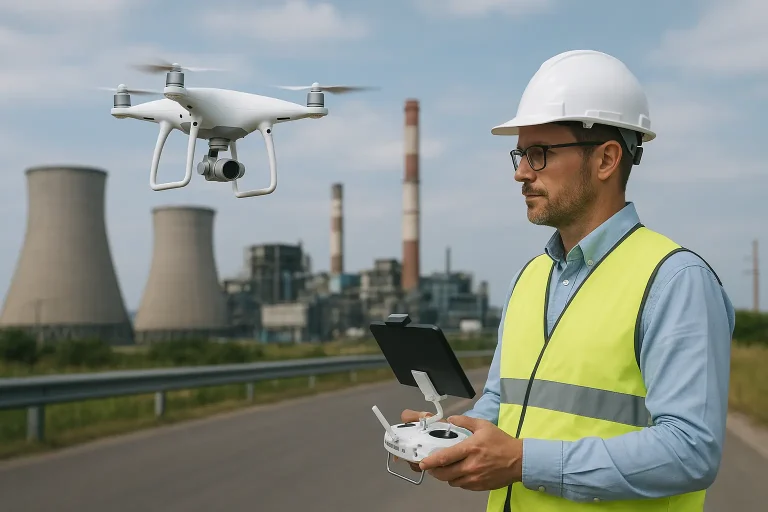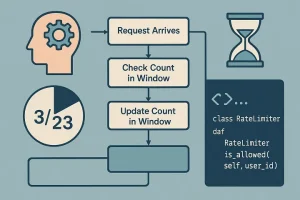Drone Inspection Market to Surge: A New Era in Industrial Monitoring
The Drone Inspection Market is poised for remarkable growth in the coming years, driven by rapid technological advancements and an increasing need for safer, more efficient industrial inspections. As industries such as construction, energy, telecommunications, and agriculture grapple with the challenges of monitoring vast and complex infrastructures, drones are emerging as indispensable tools. This article explores the key factors propelling the drone inspection market forward, its diverse applications, and what the future holds for this innovative sector.
Why the Drone Inspection Market is Growing Rapidly
The increased adoption of drones for inspection purposes stems from several compelling advantages over traditional methods. Drones can access hard-to-reach areas quickly and safely, reducing the need for expensive scaffolding, cranes, or manual labor in dangerous environments. This enhances safety by minimizing human exposure to hazardous conditions and improves operational efficiency by accelerating data collection.
Moreover, advancements in drone technology, such as high-resolution cameras, thermal imaging, LiDAR sensors, and AI-powered analytics, have transformed drones from mere aerial cameras into sophisticated diagnostic tools. These features enable detailed assessment of infrastructure integrity, early detection of faults, and comprehensive data analysis, all of which are critical for maintenance and preventive strategies.
Major Industries Fueling the Drone Inspection Market
Several sectors are actively incorporating drone inspections into their operational protocols:
Energy and Utilities
Power plants, wind turbines, solar farms, and electrical transmission lines require regular inspections to maintain performance and ensure safety. Drones equipped with thermal cameras can detect overheating components or insulation issues, while LiDAR and optical sensors help assess structural damage. The ability to perform these inspections swiftly and frequently reduces downtime and enhances grid reliability.
Construction and Infrastructure
The construction industry benefits greatly from drone-based site inspections, asset monitoring, and progress tracking. Drones provide real-time aerial views of construction sites, helping project managers make informed decisions. Infrastructure such as bridges, highways, and railways can be inspected more thoroughly without disrupting traffic or exposing workers to risks.
Telecommunications
Cell towers and communication networks demand constant upkeep, particularly in remote or challenging terrains. Drones enable remote surveys and detailed inspections of antennae, masts, and cables, accelerating the maintenance process and minimizing service interruptions.
Agriculture
Precision agriculture leverages drone inspections for crop monitoring, irrigation management, and soil health assessment. This use case, while somewhat distinct from traditional industrial inspection, is a significant component of the broader drone inspection market, highlighting diverse applications.
Technological Advancements Driving Market Expansion
Several innovations are catalyzing the growth of the Drone Inspection Market, making drones more reliable, efficient, and user-friendly:
- Improved Battery Life and Flight Time: Longer flight durations allow for more extensive inspections without frequent recharging breaks.
- Enhanced Sensor Capabilities: Integration of multispectral, hyperspectral, and thermal sensors facilitates in-depth analysis beyond visible light imaging.
- Artificial Intelligence and Machine Learning: AI algorithms process vast amounts of inspection data, detecting anomalies automatically and generating predictive maintenance reports.
- Regulatory Support: Evolving drone regulations in many countries now allow beyond visual line of sight (BVLOS) operations, expanding the scope of drone use in inspections.
Challenges and Risks in the Drone Inspection Market
Despite its promising outlook, the drone inspection market faces some challenges:
- Regulatory Hurdles: Airspace regulations, privacy concerns, and stringent certification requirements can slow deployment.
- Initial Investment: While cost-effective over time, acquiring high-quality drones and sensor payloads involves significant upfront expenses.
- Data Privacy and Security: Managing inspection data securely is critical, especially for sensitive infrastructure.
- Skill Gap: Operating sophisticated drones and analyzing inspection data requires trained personnel.
Addressing these concerns is essential to fully capitalize on the advantages offered by drone inspections.
Future Outlook: The Drone Inspection Market Beyond 2025
Market analysts project the drone inspection market to surge at a compound annual growth rate (CAGR) exceeding 20% over the next several years. This accelerated growth will be fueled by wider adoption across new industries, advancements in drone autonomy, and integration with other technologies such as the Internet of Things (IoT) and augmented reality (AR).
Potential developments include fully autonomous inspection drones capable of continuous monitoring and instant reporting, as well as collaborative fleets that cover expansive sites simultaneously. Such innovations will not only enhance operational efficiency but also reduce costs and improve safety standards across sectors.
Conclusion
The Drone Inspection Market is undergoing a transformative phase, reshaping how industries conduct routine inspections and maintenance. With their unmatched ability to access difficult environments, gather precise data, and reduce operational risks, drones are becoming essential tools in today’s industrial landscape. As technology evolves and regulatory frameworks adapt, the market’s trajectory points towards expansive growth and widespread adoption, ushering in a new era of innovation and efficiency in industrial inspection processes.




